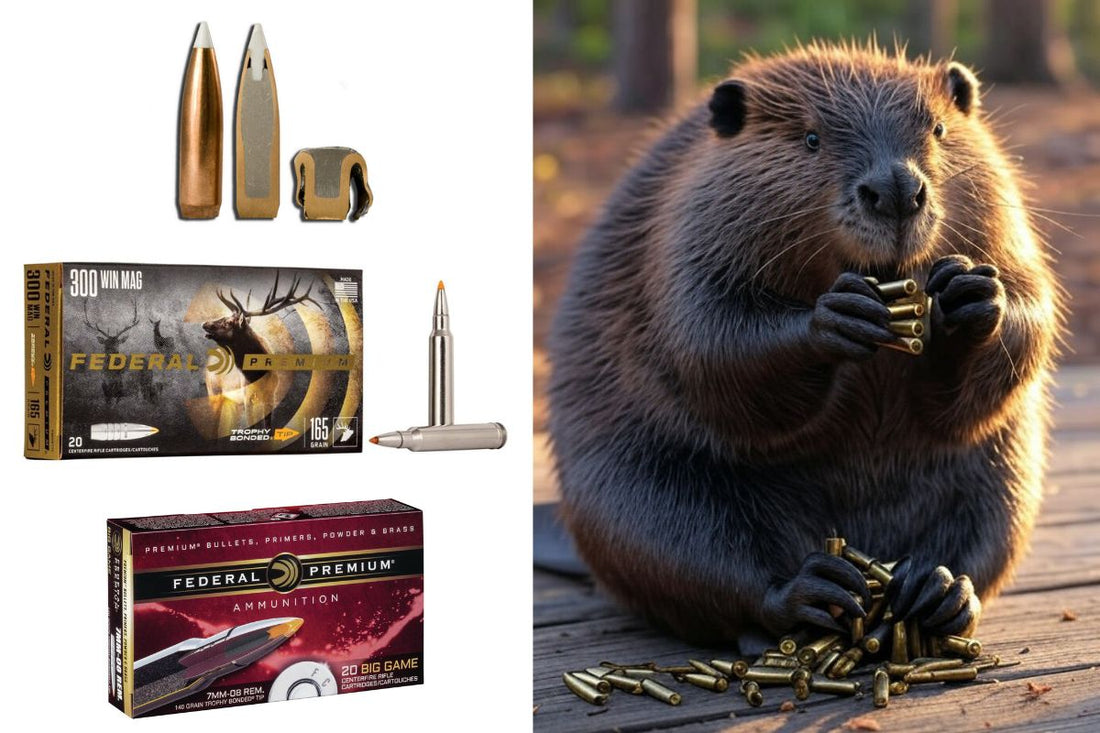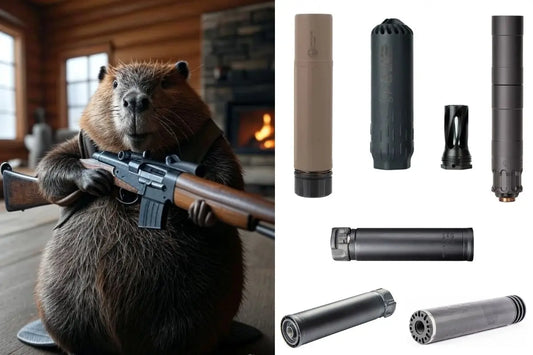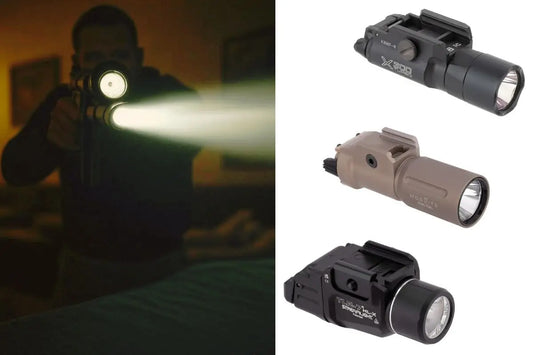
Bonded Bullets, Demystified: When They’re Unfairly Good—and When You Should Use Something Else
TL;DR for Skimmers
A bonded bullet has its lead core fused to the copper jacket. That bond keeps the bullet together as it opens, retaining 90%+ of its weight in many designs and driving deep, especially through bone or intermediate barriers. That’s why bonded bullets dominate big-game hunting and duty/self-defense (“barrier-blind”) roles. They’re not ideal for varmints (you want explosive fragmentation), for pure match accuracy, or when you want maximum, very fast expansion in soft tissue at short range. Think Swift A-Frame, Federal Trophy Bonded Tip, Nosler AccuBond for big game, and Speer Gold Dot or Winchester Defender/PDX1 for defensive pistols.
|
Scenario / Goal |
Are Bonded Bullets Ideal? |
Why (in one line) |
Example Loads |
|
Elk/moose/bear or quartering-through-bone shots |
Yes |
High weight retention & controlled expansion drive deep, straight penetration |
Swift A-Frame, Federal Trophy Bonded Tip, Nosler AccuBond |
|
Whitetail at mixed ranges |
Often |
Reliable mushrooms + fewer lead shards in meat; pick softer-bonded designs |
Hornady InterBond, Federal Fusion |
|
LE/home-defense, “barrier-blind” needs |
Yes |
Bonded JHPs resist core-jacket separation through glass/steel, meet FBI penetration |
Speer Gold Dot, Winchester Defender/PDX1 |
|
Varmint/small game, minimize ricochet/over-penetration |
No |
You want rapid fragmenting bullets and big energy dump, not deep penetration |
Non-bonded V-Max, Ballistic Tip-Varmint (non-bonded) |
|
“Match-only” accuracy at long range |
Usually no |
Match bullets trade terminal durability for ultra-uniform jackets & profiles |
Non-bonded match (e.g., ELD-Match, SMK) |
|
Short-range, soft-tissue only, max expansion |
Sometimes no |
Soft, non-bonded JHPs can expand faster/larger in pure tissue |
Non-bonded soft points/JHPs |
|
Budget bulk practice |
No |
Bonded bullets cost more to make; not needed for punching paper |
Generic FMJ/SP |
What “Bonded” Actually Means (and Why It Matters)
A bonded bullet is a jacketed projectile whose core (usually lead alloy) is chemically or mechanically fused to the jacket. Different shops do it differently:
- Electrochemical/“molecular” bonding (e.g., Speer’s Uni-Cor): the jacket is plated onto the core “one molecule at a time,” which they tout for virtually eliminating core-jacket separation.
- Welded/fused cores (e.g., Hornady InterBond): thick gilding-metal jacket with a proprietary bond that “stays together” even under heavy impact.
- Two-core mechanical + bonding hybrids (e.g., Swift A-Frame): a partition plus bonded lead cores, delivering 95%+ weight retention and ~2.2× expansion.
What the bond does: When a bullet mushrooms, it experiences huge shear forces at the jacket-core interface. Non-bonded bullets can shed their cores or “slip” jackets, leading to fragmentation and shallow penetration. Bonding keeps the mass together, so the bullet pushes farther—a key reason many FBI-protocol-tuned pistol loads are bonded.
As Winchester summarizes, “When a bullet’s core and jacket stay together, maximum weight is retained… resulting in deep penetration.”
A quick physics refresher for the ballistics nerds
Penetration correlates with sectional density (SD) and retained mass/shape in the target medium. SD is mass divided by cross-sectional area; higher SD generally penetrates deeper, all else equal. Ballistic coefficient (BC), by contrast, is about how well a bullet overcomes air drag in flight. Bonding doesn’t directly boost BC or SD; it preserves mass and shape during terminal phase, letting the bullet use its SD effectively through bone and barriers. For definitions of SD and BC, see these primers.
Where Bonded Bullets Shine
1) Big Game: Elk, Moose, Hogs, Bear, and Hard Angles
If you may have to drive through shoulder, big ribs, or quartering angles, bonded designs are money. Expect controlled expansion (typically 1.6×–2.2×) and high weight retention (often 90%+ in premium designs), which equals deep, straight penetration and reliable exit wounds for blood trails.
Go-to examples & notes:
- Swift A-Frame: benchmark bonded terminal performance; manufacturer claims 95%+ retention and ~2.2× expansion; the front core upsets while the rear core carries on. Ideal on elk/moose/bear where bone impact is likely.
- Federal Trophy Bonded Tip (evolution of Jack Carter’s Trophy Bonded Bear Claw): modern polymer tip and aerodynamic ogive on a deeply penetrating bonded design—classic dangerous-game DNA made sleeker.
- Nosler AccuBond: sleeker than the Partition, bonded for higher retention; Nosler indicates 65–70% weight retention as a realistic expectation and deeper penetration vs. non-bonded Ballistic Tip.
- Hornady InterBond: one of the softer-opening bonded big-game bullets—excellent for whitetail through elk where you want reliable, wide mushrooms without jacket-core failures.
Pro tip: Heavier-for-caliber bonded bullets pair high SD with durability; that’s why 180gr .30-cal bonded loads are elk staples. (Background on SD/penetration here.)
2) Duty and Home Defense: “Barrier Blind” Performance
The FBI protocol prizes 12–18 inches of penetration in calibrated gel after common barriers (auto glass, steel, wallboard). Bonded JHP pistol bullets resist “petals shearing off” and core loss, so they keep expanding while still making the 12–18″ window.
Standouts:
- Speer Gold Dot: arguably the modern archetype of bonded duty bullets—electro-bonded Uni-Cor construction, with short-barrel variants and now 5.7×28 personal-defense loads using the same bonded tech.
- Winchester Defender/PDX1: designed and marketed to FBI test protocol performance; bonded JHP construction for consistent expansion (Winchester cites ~1.5× expansion figures on the line page).
Opinionated take: If intermediate barriers (car glass, doors) are a realistic concern, choose a bonded duty JHP over a boutique non-bonded “fast-expand” pill. The real world is rarely pure gel.
Where Bonded Bullets Are Not the Best Choice
Varminting & Small Game
You want explosive fragmentation to anchor small animals quickly and to reduce ricochet/over-penetration. Bonded bullets hold together by design—the opposite of what you want prairie-dogging. Pick thin-jacket, non-bonded options.
“Match-Only” Precision
While many bonded bullets shoot very well, the tightest long-range groups still typically come from non-bonded match bullets with ultra-uniform jackets/ogives. Bonding processes can add manufacturing complexity that isn’t aimed at .2-MOA bragging rights.
Maximum, Fast Expansion at Short Range in Soft Tissue
For close, soft-tissue shots (e.g., deer broadside from a tree stand), a soft, non-bonded bullet may expand faster and larger than a tougher bonded design—potentially a wider early cavity if you don’t need barrier performance.
Bulk Training
Bonded bullets are more expensive to make. Save them for the hunt or the carry mag, not the 500-round practice day.
What Do the Manufacturers Say?
- Speer on Gold Dot tech: “We bond the jacket to the core one molecule at a time… virtually [eliminates] core-jacket separation.”
- Hornady on the point of bonding: “Regardless how they are manufactured, the purpose and result is the same: They stay together.”
- Winchester on why it matters: Bonding preserves weight and “results in deep penetration.”
- Swift A-Frame claim: “95%+ weight retention” with “2.2×” expansion.
- FBI test window (context for defense loads): 12–18″ penetration standard in calibrated gel under protocol.
Product Shortlist by Use-Case (With Rationale)
Big-Game North America (elk, moose, large hogs, bear)
- Swift A-Frame: Our top “no-drama” choice when bone impact is expected. Proven globe-trotter on tough animals; premium price, premium outcomes.
- Federal Trophy Bonded Tip: Classic Bear Claw lineage with a modern polymer tip for better BC and initiation—excellent penetration with flatter trajectories than the old blunt-nose TBBC.
- Nosler AccuBond: If you want sleeker flight than partition-style bullets but still want bonded terminal behavior; realistic 65–70% weight retention keeps it versatile from deer to elk.
- Hornady InterBond: A bit softer as bonded bullets go—great for whitetail and mule deer where you want big mushrooms without jacket slippage.
Deer-centric, Mixed Distances
- Fusion (Federal) and InterBond (Hornady): both produce reliable, wide mushrooms with strong retention—nice balance of “open up” and “stay together.”
Duty / Defense (“Barrier-Blind”)
- Speer Gold Dot (standard + short barrel + 5.7×28 PD): the reference standard for bonded JHP barrier performance; extensive agency track record.
- Winchester Defender/PDX1: engineered to FBI protocol; bonded core for consistent expansion through common barriers.
Pros and Cons—With Nuance
Pros
- Deep, straight penetration through bone and intermediate barriers; retained mass keeps momentum in the target medium. (Physics + FBI protocol context.)
- Controlled expansion with high weight retention (often 90%+ on premium hunting bullets; Swift claims 95%+).
- “Barrier-blind” reliability for duty/defense; bonded JHPs are engineered around 12–18″ gel penetration after glass/steel.
- Less jacket-core separation, fewer random failures; lower risk of “grenading” on heavy bone at magnum velocities.
Cons
- Cost: bonding adds steps; you pay for it. For practice, FMJ or non-bonded SP/JHP saves real money.
- Sometimes slower/lower expansion in soft tissue than very soft non-bonded bullets—especially at low impact velocities—which can mean smaller early cavities.
- Not made for varminting: bonded construction runs counter to the high-fragmentation goal.
- Absolute match precision: while many bonded bullets are accurate, the most uniform long-range groups still tend to come from non-bonded match designs.
Critical take: If your shot can encounter bone or barriers, the terminal robustness of bonded bullets is worth every penny. If your problem is small critters under 10 pounds or ELR paper, choose purpose-built non-bonded designs.
Frequently Misunderstood: BC, SD, and Bonding
- Bonding doesn’t raise BC; BC is about aerodynamic drag. If you’re choosing between two hunting bullets with the same BC, the bonded one won’t fly better—but it will survive impact better. If BC is your rabbit hole, start here.
- Sectional density (SD) matters for penetration, but bonding helps you keep the SD you launched by preventing mass loss and keeping the mushroom coherent rather than fragmenting. SD primer here.
Edge Cases, Myths, and Contrarian Notes
- “Non-bonded always fragments.” No. Plenty of non-bonded controlled-expansion bullets hold together well at moderate velocities and soft-tissue hits. Bonding just makes that outcome more robust, especially at high impact speeds or through bone/glass.
- “Bonded bullets are less accurate.” Sometimes, but not automatically. There are very accurate bonded designs. As a class, though, pure match bullets still rule for group size.
- “FBI’s 12–18″ is gospel for everything.” It’s a duty-centric rubric developed for handguns and barriers. Hunters should optimize for the animal and angle, not a fixed number; still, it’s a useful sanity check for defensive ammo.
- “All bonding is the same.” Not really. Electro-plated (Gold Dot), chemically bonded (AccuBond/InterBond), and hybrids with partitions (A-Frame) can show different expansion thresholds and petal integrity. Manufacturer docs capture those design intents.
How to Choose (Fast)
-
Define the worst case, not the average case.
Quartering-to elk shoulder? Pick A-Frame/Trophy Bonded Tip/AccuBond in heavier-for-caliber weights. -
If barriers are plausible, go bonded JHP.
For duty/home defense, Gold Dot/Defender have decades of gel and street history behind them. -
If your target is tiny and soft, go the other way.
Pick non-bonded varmint bullets that fragment quickly. - If you demand sleek flight + terminal reliability, choose AccuBond/Trophy Bonded Tip/InterBond—higher BCs than many flat-nose tough pills, with real bonded cores.
A Few Product Spotlights (for the shortlist)
- Swift A-Frame (Rifle Bullets): Two cores separated by a partition and bonded—belt-and-suspenders terminal insurance. Claimed 95%+ retention, 2.2× expansion. If we were guiding a once-in-a-lifetime elk hunt, this is our “don’t overthink it” pick.
- Federal Trophy Bonded Tip: The Jack Carter Bear Claw legacy modernized: polymer tip, better BC, same deep-penetrating character. Great on elk/moose, still controlled enough for deer.
- Nosler AccuBond: Clean aerodynamics, realistic 65–70% retention, big game all-rounder. If your rifle prints tiny with AccuBonds, you’re done shopping.
- Hornady InterBond: Thick jackets and a soft-bias bonding profile—ideal where you want a bigger mushroom on deer yet enough integrity for elk ribs.
- Speer Gold Dot (Handgun + 5.7×28 PD): Electro-bonded Uni-Cor bullets with barrier consistency and tuned expansion; huge institutional track record.
- Winchester Defender/PDX1: Bonded JHP “engineered to maximize terminal ballistics as defined by the FBI test protocol,” with ~1.5× expansion notes on the line page.
FAQ (Because You’ll Ask)
Is a bonded bullet “better” than a monolithic copper bullet?
Different tool. Monolithics (e.g., all-copper) rely on petal design and shank to stay intact; they’re great for penetration and weight retention, too, but often need higher impact velocity to open reliably. Bonded lead-core bullets can offer bigger mushrooms at modest velocities while holding together.
Do bonded bullets always retain 90%+ of their weight?
No—design and impact conditions matter. Swift A-Frame claims 95%+; AccuBond realistically sits ~65–70% per Nosler’s own FAQ. Still, both stay cohesive and penetrate as designed.
Are bonded bullets more accurate?
Not inherently. Some shoot lights-out in a given rifle; others don’t. If you need benchrest-tier precision, look at non-bonded matches—then pick a hunting bullet your barrel actually loves.
What about the old Remington Core-Lokt? Is that bonded?
Original Core-Lokt is a mechanically locked (non-bonded) soft point; Core-Lokt Ultra Bonded existed as a bonded variant. Accuracy experiences were mixed anecdotally. Check your rifle.
How do FBI gel numbers translate to hunting?
They don’t—directly. FBI 12–18″ is for handguns + barriers. For hunting, think animal size, angle, bone, and exit strategy. Still, the protocol is a useful lens for evaluating defensive loads.
Bottom Line
If your mission entails uncertainty—big bones, tough angles, or barriers—bonded bullets remove a lot of variables. They open, they hold together, and they drive. That’s why our shortlist for big game starts with Swift A-Frame, Trophy Bonded Tip, AccuBond, and InterBond, and why Speer Gold Dot/Winchester Defender dominate duty/defense roles. Save the fast-fragmenting non-bonded pills for varmints, and the match bullets for paper.
Buy bonded bullets at PalmettoStateArmory.com.




